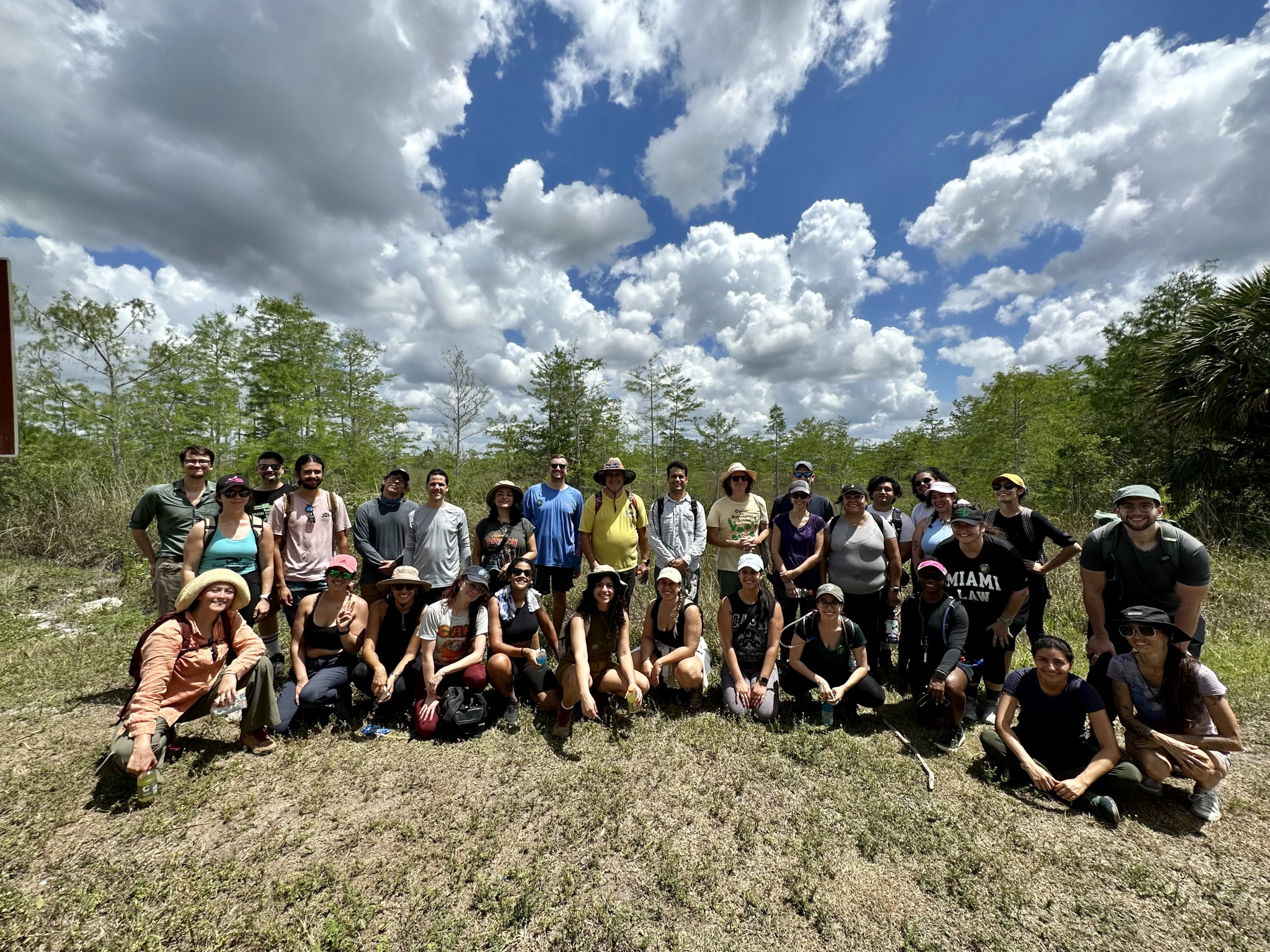
Miami Hiking Club photo

Audio By Carbonatix
Miami Hiking Club founder Maria Llorens has led free group hikes to the Everglades since 2022, but no matter how many times she’s visited the swamp without incident, her parents still frequently tell her the same thing: Be careful with the alligators.
“They definitely think it’s a little crazy,” says Llorens via Zoom. “But I’ve been doing this for years and tell them there’s very little risk.”
Llorens has seen gators on hikes – big ones. But she insists the sightings aren’t as frequent as one might think. The same goes for snakes. She says the sound of a few dozen hikers tends to keep wildlife at a distance.
The group’s outings happen about once a month in both the wilderness and urban settings. They typically draw about 35 to 55 people, and demand is so high that there’s often a waitlist of 15 to 20 additional people.
What makes the hikes so popular?
“What I hear from people is that they really want to find a community,” she says. “Oftentimes, they’re folks who enjoy the outdoors and are just looking for a group to go out with. Specifically with the Everglades, it’s people who have never been out there or at least have never been out on a wet walk and feel too intimidated to do it by themselves.”
Demand for the group’s events is high, but Llorens says she doesn’t see many other hikers when she’s out in the national park. Apparently, many locals don’t even realize you can hike in this part of the country.
“They’re more into water sports here,” she says. “People will tell me, ‘I didn’t know hiking existed in Florida.’ They think you can only hike in the mountains.”
Many of Miami Hiking Club’s treks take place out west in Big Cypress National Preserve, but the group also hikes parks such as Crandon Park in Key Biscayne, Greynolds Park in North Miami Beach, Mizell-Eula Johnson State Park in Dania Beach, and Grassy Waters Preserve in West Palm Beach.
One perk of South Florida’s more forgiving terrain? You don’t need to go out and buy expensive hiking apparel and supplies for these walks. Llorens recommends a pair of comfortable sneakers, water, and light snacks. For wet walks, she recommends a long-sleeved shirt and pants to protect against bug bites, and a makeshift walking stick (a broom or mop handle will suffice).
Be prepared to get your shoes dirty, she warns – especially on wet walks. These trips require walking through water anywhere from ankle-high to knee-deep. Miami Hiking Club typically refrains from wading in waist-high waters.
“I had someone tell me they bought $150 boots that were not really hiking boots. They were like fashion boots,” Llorens says. “They were upset that they got messed up on our hike. We send out an email telling people what to bring and wear. You don’t have to spend $150 on hiking boots.”
Miami Hiking Club launched after locals took notice of Llorens’ hiking photos on her @dispatchesfromtheswamp Instagram account. She started going out to the Everglades regularly during the pandemic and heard from people who saw her pictures and wanted to join.
The first official hike involved around 15 hikers, and the group quickly expanded. Eventually, Llorens was forced to implement size limits and waiting lists. She also enlisted ten trusted volunteers as hike leaders.
For now, Llorens is content with taking the Miami Hiking Club out about once a month. She has a career outside of hiking (she is the policy and research director for the nonprofit Miami Workers Center), and she’s also been known to hike long distances on her own. In 2023, she spent four months hiking the Florida Trail, starting at Fort Pickens in Pensacola Beach and ending at the Oasis Visitor Center in Big Cypress National Preserve.
Llorens says she would need to look into sponsorship or funding to increase the frequency of the club’s hikes. That begs the question: Why not regularly charge people to take part in these hikes as so many other tours do?
“Living in Miami is so expensive,” she says. “I want to make this accessible.” She prefers to accept voluntary donations via Cash App rather than charge a mandatory fee. “The outdoors is sometimes only accessible to people who have the time and money to go out there. It’s really about giving people an alternative and getting a wide variety of people as well.”